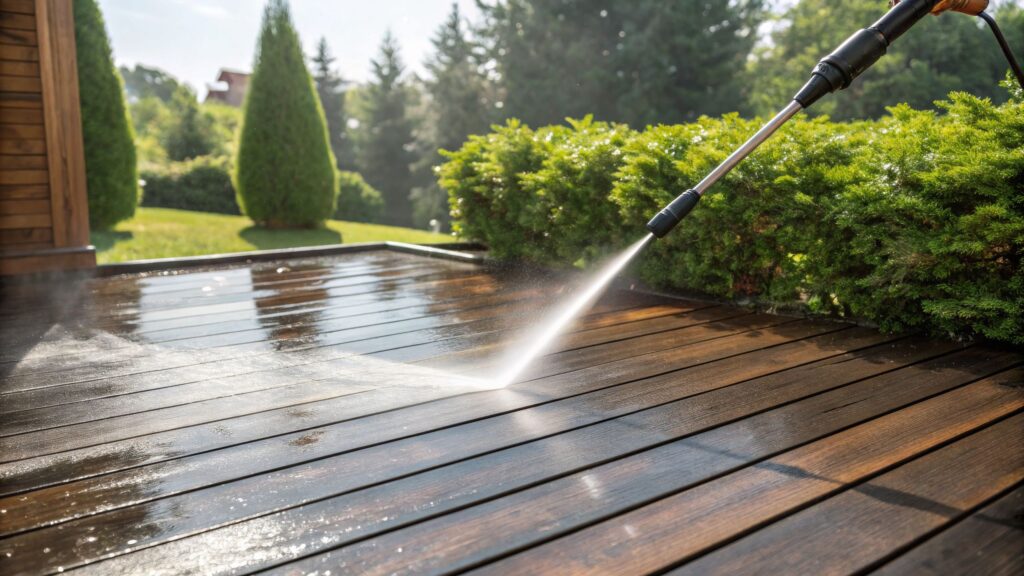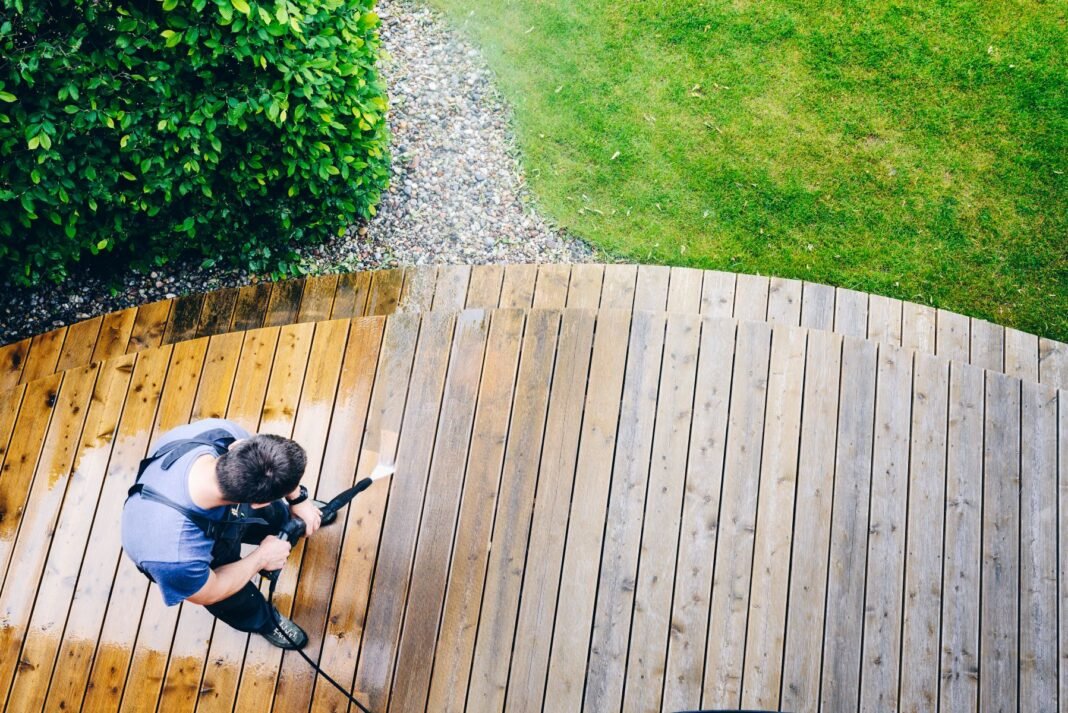Maintaining a deck in Denver requires regular cleaning to remove dirt, grime, mold, and mildew. Pressure washing is effective, but improper techniques can damage wood, composite materials, or landscaping. Following a structured approach ensures thorough cleaning without compromising the deck’s integrity.
Read on to learn the step-by-step guide on pressure washing decks without damage.
When to Hire a Professional
DIY cleaning works for basic maintenance, but multi-level decks, stubborn organic stains, or specialty materials like tropical hardwoods typically demand professional care and techniques. Certified technicians can help mitigate risks of over-pressure damage, improper chemical use, and safety hazards while delivering superior, lasting results.
Therefore, if you’re living in Denver, CO seeking professional assistance, working with reliable providers like Platinum Pressure Washing would be an excellent idea as they offer expert services tailored to Denver’s unique climate and deck materials.
Understanding the Risks of Pressure Washing
High-pressure water can strip paint, gouge wood, or force moisture into cracks, leading to warping and rot. Composite decking may also suffer from excessive pressure, causing surface fraying. Selecting the correct pressure setting and nozzle is critical to prevent irreversible harm.
Furthermore, a pressure washer with adjustable PSI (pounds per square inch) is ideal. For most decks, 500–1500 PSI is sufficient. A wide-angle nozzle (40-degree tip) can disperse pressure evenly, reducing the risk of concentrated damage. Electric pressure washers are typically gentler than gas models, making them suitable for softer woods like cedar or pine.
Preparing the Deck for Cleaning
Taking time to prepare the deck before pressure washing can prevent damage and improve results. Clearing debris, inspecting structural issues, and pre-treating stains ensure safer, more effective cleanliness. Proper preparation can also protect surrounding plants and help the cleaning solution work more efficiently, reducing the need for excessive pressure.
Hence, all furniture, planters, and loose debris must be removed before pressure washing to prevent obstruction and damage. Delicate nearby vegetation should be covered with plastic sheeting or drop cloths to protect against harsh cleaning chemicals and high-pressure overspray, ensuring a safer, more controlled cleaning process.
Additionally, a thorough deck inspection should identify loose fasteners, splintered boards, or soft, rotting wood—common issues worsened by pressure washing. Addressing these problems beforehand can help prevent water intrusion, further deterioration, and safety hazards. Tightening hardware and replacing compromised materials also ensures a stable surface ready for deep cleaning.
Lastly, applying a deck cleaner or oxygenated bleach solution to stained or moldy areas loosens embedded grime before pressure washing. Allowing 10–15 minutes dwell time enables the solution to break down contaminants naturally, minimizing the need for aggressive pressure that could damage wood fibers or composite surfaces.
Pressure Washing Techniques for Safe Cleaning

Residential pressure washing is an efficient way to clean decks, but improper techniques can cause damage. Using the right pressure settings, nozzle type, and cleaning methods ensures thorough results without harming delicate surfaces. Below are the essential steps to safely remove dirt, mold, and stains while preserving the integrity of your deck:
Maintain the Correct Distance
Keeping the pressure washer nozzle 12–18 inches from the deck surface can prevent concentrated force that can gouge or splinter wood. Beginning at the maximum distance and carefully advancing closer allows for gradual dirt removal while you preserve the deck’s structural integrity and finish and boost curb appeal.
Use Consistent, Even Strokes
Glide the pressure wand steadily with the wood grain using overlapping, linear strokes to ensure even cleaning without streaks. Pausing too long in any area can risk creating uneven etching or water marks, while consistent motion can distribute pressure evenly for a uniformly refreshed surface.
Manage Water Pressure
Always initiate pressure washing at the gentlest effective setting (typically 500-800 PSI for wood) to prevent surface damage. Test hidden areas like stair risers or deck edges first—if grime persists, incrementally increase pressure while monitoring for wood fiber disruption or composite material fraying.
Post-Washing Steps to Protect the Deck
After effective pressure washing, proper post-cleaning care is crucial to maintain your deck’s longevity. It can help prevent moisture damage, UV deterioration, and mold growth. Below are the key steps to ensure your deck stays in top condition, preserving its appearance and structural integrity for years to come:
Rinse Thoroughly
After pressure washing, thoroughly rinse the deck surface with a garden hose to eliminate all cleaning solution traces and dislodged debris. Pay special attention to gaps between boards where trapped residue can cause discoloration, wood degradation, or slippery surfaces when left unchecked.
Allow Proper Drying Time
Allowing 24–48 hours for complete drying ensures no moisture remains trapped within the wood fibers. Applying sealants too soon causes adhesion failure, leading to premature peeling, while trapped dampness creates ideal conditions for mold colonies to develop beneath the protective coating.
Apply Protective Coatings
Applying a UV-resistant sealant or penetrating stain after drying creates an essential barrier against Colorado’s intense sun and moisture fluctuations. These treatments prevent wood fibers from drying out, cracking, or graying while resisting water absorption that leads to warping and rot—extending deck life and making it more appealing over the years.
Conclusion
Pressure washing on a Denver deck demands careful attention to equipment, technique, and preparation. By following these steps, you can restore your deck’s appearance safely. If you prefer professional care, specialized exterior cleaning services can deliver precision and peace of mind. Regular maintenance also preserves beauty and structural integrity, ensuring years of outdoor enjoyment.


